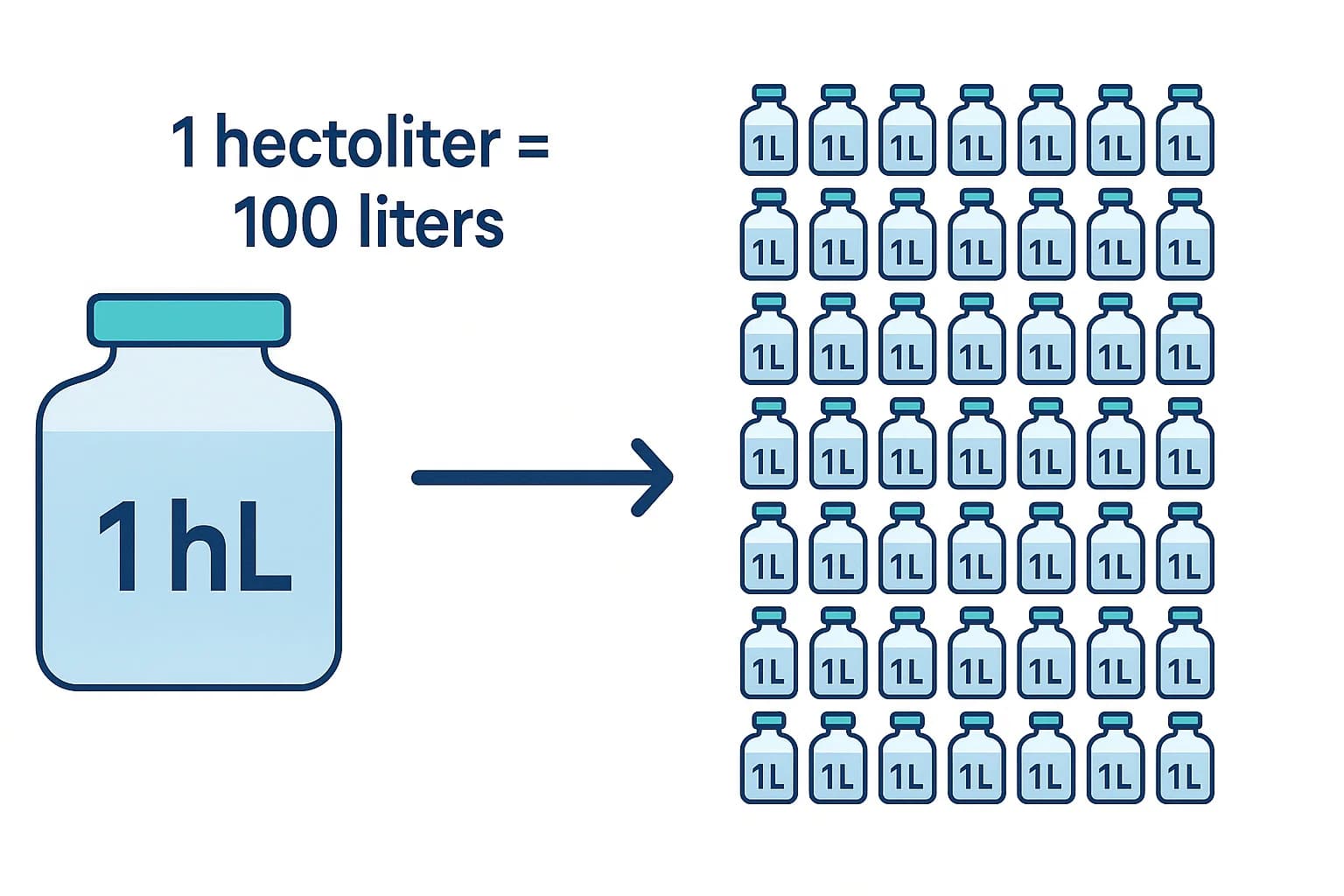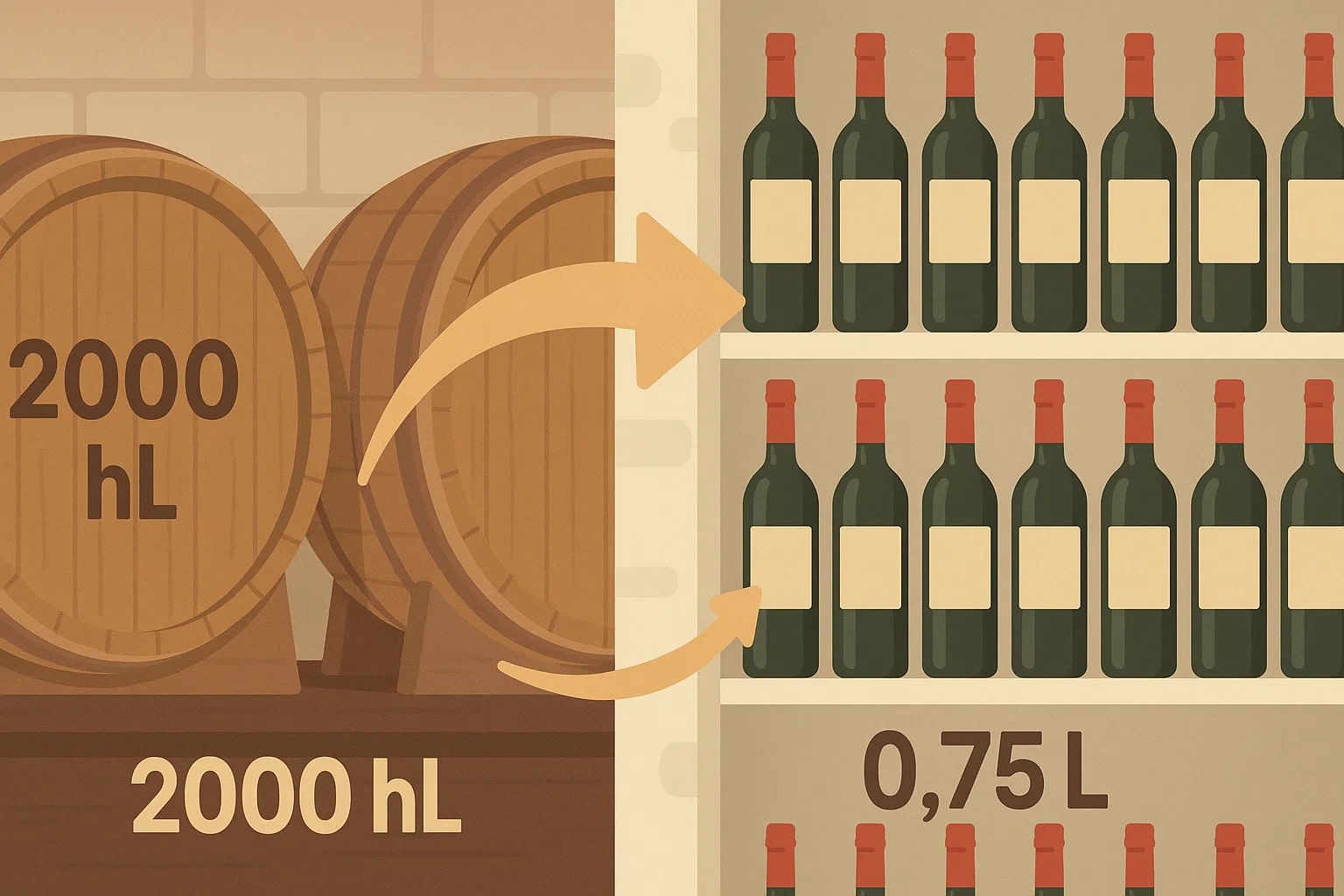hectoliter to liter – How to convert hL to L
The conversion from hectoliters to liters is straightforward but highly useful in large-scale industries like brewing, winemaking, and agriculture. A hectoliter measures bulk quantities, while liters are used for packaging and everyday trade. Converting between them helps scale production down to the bottles we see on shelves.

What is a hectoliter (hL)?
A hectoliter equals 100 liters. The unit is common in brewing, wine production, and grain storage, where bulk quantities are tracked. For example, a brewery might produce 500 hL of beer in a single batch.
What is a liter (L)?
A liter is the base metric unit for liquid volume. It equals 1000 cm³ or 1 dm³. Liters are used worldwide for beverages, packaging, recipes, and scientific measurements.
Conversion formula – hectoliter to liter
Because both are metric units, the relationship is exact.
The base equivalence is:
1 hL = 100 L
To convert hectoliters to liters:
1 hectoliter = liter × 100
Examples:
5 hL = 500 L
If you need broader calculations across multiple volume units, Jetcalculator’s Volume Converter and its full set of Conversion Tools provide quick, accurate results.
Do you know?
-
In brewing: Beer production is often recorded in hectoliters, but bottles and kegs are labeled in liters.
-
In agriculture: Grain yields are sometimes measured in hectoliters, a tradition that dates back to 19th-century Europe.
-
In trade: Wine exports from France and Italy are reported in hectoliters, but once bottled, they are sold in liters.
From cellars to supermarket shelves
This conversion is easy to spot in the wine industry. A vineyard might report a harvest of 2000 hL of wine, which is exactly 200,000 L. In bulk, the measure is convenient for production and trade. But when that wine reaches consumers, it’s divided into 0.75 L bottles.
The same happens in breweries: a tank filled with hectoliters of beer becomes thousands of single-liter or half-liter servings. The conversion connects large-scale production with everyday packaging.

Scaling tradition into every pour
The formula 1 hL = 100 L captures how the metric system adapts from mass production to personal use. Hectoliters keep track of fields, vats, and tanks, while liters describe what we actually drink and buy.
By switching easily between these two, industries can move seamlessly from harvests and batches to bottles and glasses — a reminder that behind every pour is a simple conversion that makes global trade possible.

